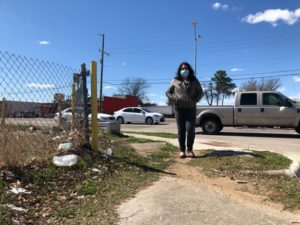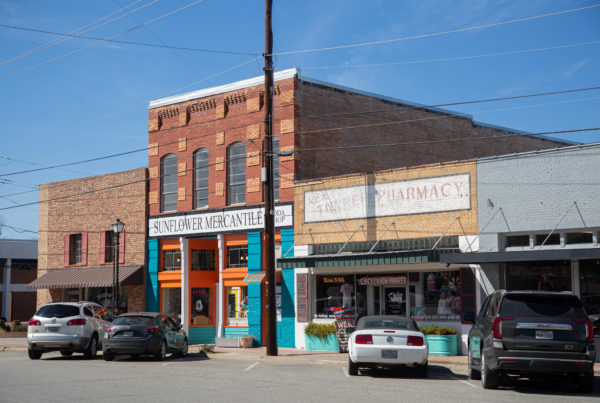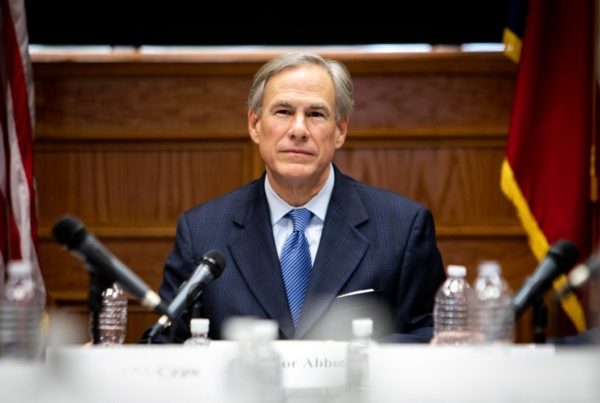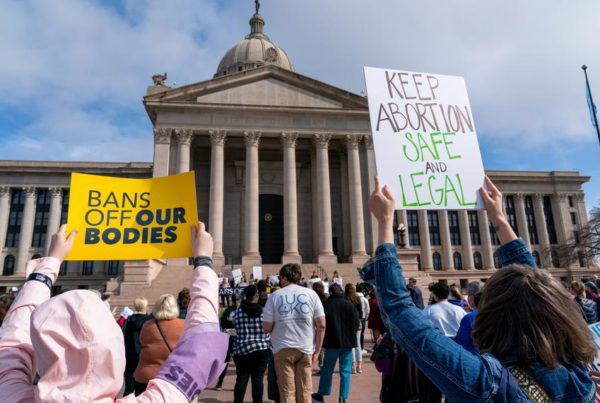From KERA:
As Patricia Vega walks around the Bachman Lake neighborhood on a windy day, her footsteps crunch dirt and gravel. That, she said, is where a sidewalk should be located.
She points to the intersection of Overlake Drive and Ovella Avenue.
“Esta es la conexión donde no hay banquetas,” Vega said in Spanish. (“Here, at this intersection there are no sidewalks.”)
Sidewalks in low-income neighborhoods are more a necessity than a convenience. But a City of Dallas plan that calls for adding new sidewalks — and improving existing ones — may not make up for decades of neglect and infrastructure disinvestment.
“Las banquetas no están adaptables, no tienen especialmente señalamientos, no tienen esas rampas, esos señalamientos de cruce,” Vega said. (“The sidewalks here are not adaptable, don’t have (wheelchair–friendly) ramps and don’t have great signage.”)
In more wealthy neighborhoods people use sidewalks to walk their dogs or go on a jog. But in underserved neighborhoods, like Vega’s, they’re a transportation artery. And sidewalks are key to supporting health, accessibility, and pedestrian safety.

Patricia Vega said some people take sidewalks for granted. The Bachman Lake neighborhood resident said the streets have few sidewalks — or none — and it is hard for her to walk to the grocery store.
In the mostly Hispanic neighborhood of Bachman Lake, where the median household income is about $30,000, many people don’t have access to a car.
Vega has four kids. Three have autism and learning disabilities. She said her family depends on sidewalks to go to the grocery store, the doctor and the park.
“Es peligroso y cuando tienes niños con necesidades especiales es difícil controlarlos. Entonces si es requerido una banqueta para poder, se podría decir estar más seguros,” Vega said. (“It is dangerous and when you have children with special needs it is difficult to control them. And you need the sidewalk to feel more safe.”)
Sidewalk plan tensions
Dallas has more than 4,000 miles of sidewalk, but nearly 50% are damaged. And city officials say more than 2,000 miles of sidewalks need to be built.
For years, Dallas leaders have promised to make fixing sidewalks that are broken or too narrow a priority — and to build new ones. The city’s Sidewalk Master Plan identifies 12 target areas for sidewalk improvements. Some of those include portions of Martin Luther King Jr. Blvd., Hampton Crossing, Hampton Rd. and Illinois Ave., Cedar Creek, and Elam Creek. Fixing all of Dallas’ sidewalk problems ultimately could cost as much as $2 billion dollars.
“Our core methodology consisted of six factors, so we have places of public accommodation, equity, street classification, citizen request, pedestrian safety and activity areas,” said Efrain Trejo, a Senior Program Manager at the city’s Department of Public Works.
The plan was intended to provide something for each of the 14 Dallas council districts. But Council Member Tennell Atkins, who represents southern Dallas says the plan is not equitable.
“You can’t just say, ‘OK, I got 14 council district. Everybody get the same amount of money.’ No, we never catch up,” Atkins said.
For example, Atkins said in his district the rural neighborhood of Cigarette Hill, which is located near Lancaster Road and Simpson Stuart Road just off I-20 desperately needs sidewalks and did not get any funding.
Council Member Carolyn King Arnold said political games inside the city hall chambers often get in the way of talking about Dallas’ history of systemic racism. Arnold said it is time for wealthy districts to share more resources with underserved ones.
“You [wealthier districts] are really fat, you’re overweight with resources — it’s time to share with your other brothers and sisters who have been starving to death for many, many years. So you’re going to have to take some food out that plate and put it on someone else’s plate,” Arnold said.
Putting pedestrians first
Dallas resident Krista Nightengale hauls a black wagon through the bumpy sidewalks of downtown. The wheels grind through the gravel. Her 12-year-old dog Reno lost motor function in his hind legs about a year ago. He’s inside the wagon.
Nightengale has lived downtown for over a decade. She said that in Dallas, pedestrians are not valued.
“A lot of this is just what are Dallas priorities. Are we going to start putting priorities on people over cars?” she said.
Dallas has one of the highest traffic fatality rates among the 15 most populous cities in America. And since 2010, traffic deaths in Dallas have increased by 80%. Pedestrians are involved in more than one out of every three traffic accidents in Dallas.
Part of the city’s sidewalk plan is to improve pedestrian crossings at “identified high-crash intersections.”
Nightengale said even in a part of town where there are many sidewalks, taking a stroll can be dangerous. Walking around her neighborhood she points to streets that are missing white crossing lines and sections of sidewalks.
“Let’s take this ramp right here. That ramp kind of shoots you off a little bit into the street,” she said. “You feel like you are kind of being put into the street… That’s probably one thing I wouldn’t have noticed if I wasn’t pulling an 81-pound dog on a wagon.”

Krista Nightengale walks her elderly and disabled dog Reno through downtown Dallas to the Deep Ellum dog park. Nightengale says the lack of sidewalk accessibility has made it increasingly difficult to walk her dog using a cart. She is pushing for more thoughtful planning for sidewalks.
Keren Carrión / KERA
Nightengale is the executive director of the nonprofit Better Block in Dallas. She uses social media platforms to detail her personal experience navigating the city on foot and encourages others to create awareness around walkability in Dallas.
Vega said she would like to see the Bachman Lake neighborhood become more walkable. She didn’t know the city has sidewalk plan, but she hopes her community will receive funding.
“Una banqueta, a lo mejor para los que tiene dinero, no es nada. Pero realmente nosotros no tenemos ese dinero para poderlo hacer,” Vega said. (“A sidewalk may not mean much for people who have money. But in reality we don’t have the money to do it ourselves.”)
Got a tip? Alejandra Martinez is a Report For America corps member for KERA News. Email Alejandra at amartinez@kera.org. You can follow Alejandra on Twitter @alereports.














